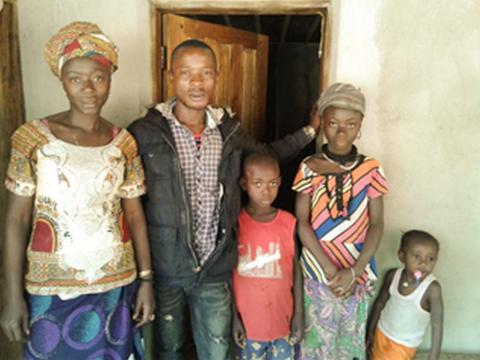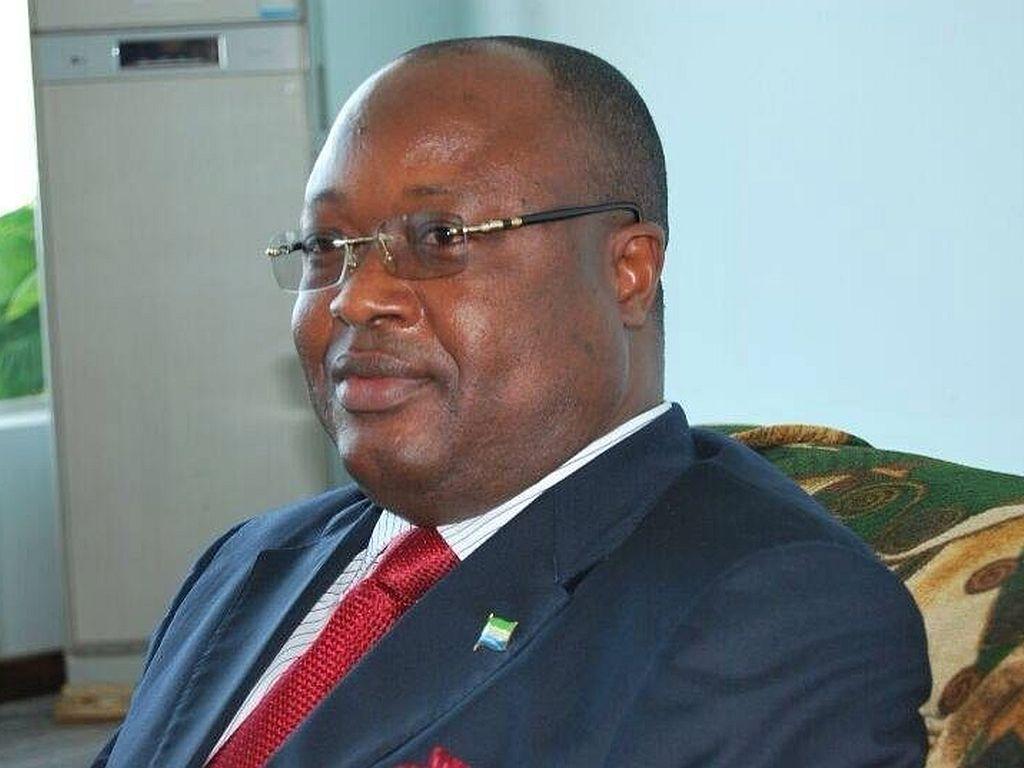By Emma Black
After five years of apprenticeship under his father and 12-years working dry riverbeds as an artisanal miner, Alieu Musa knows a thing or two about digging, swishing gravel and finding diamonds. His roughened hands parade his 37-years as they grip the handlebars of the small “okada” (a local motorbike) as he wheels over the pitted roads towards a section of lower Bambara Chiefdom, Kenema District, in the south east of Sierra Leone, on his way to the artisanal diamond mine he manages. It’s also where Musa meets his labourers, shovels, sieves or “shakers” and pickaxes for another day of back-breaking digging.
For about six months of the year, each morning before sunrise, Musa zips up his beaten windbreaker and packs a sachet of supplies to hunt for that elusive “get rich quick” diamond. It’s an hour motorbike ride and 45-minute hike to the mining site from the village where Musa was born and has lived his entire life. Koina village is a small collection of about 50 mud-brick houses topped with sheets of corrugated zinc. Musa’s 3-room house is unfinished and his six children (from two wives) see him off and wish him luck. After Musa disappears along the dusty road, three of his children will busily prepare to attend a local school over a mile away. Musa didn’t finish primary school but wants his children to be educated because, “I don’t want them to have to live this hard life like I have,” he said.
“Artisanal mining” means mining operations must be less than ten metres deep, less than one acre and only rudimentary hand-held tools can be used. The use of motorized machines except water pumps is not permitted. Artisanal mining operations use untrained miners with very limited technical and financial capacity, non-mechanized technology, and ad hoc mining methodologies. Poverty and artisanal mining are inextricably linked and dominated by rural, under-educated, poor people.
It’s mid-season for artisanal diamond mining and labourers are slowly working their way down… through layers of topsoil to the gravel under layer. “The gravel is where the diamonds are, hopefully. We have to dig down about 8-12 feet to find the stones,” said Musa. For six months of the year, Musa leads a small group of ten labourers working on two plots under the hot burning sun. The diggers are working on removing the first layer of topsoil, shoveling the dirt into a larger, water-filled pit that had been mined the previous year. Mamoud Morra, stands bare-chested and in bare feet hoisting dirt one shovelful at a time. He said, “We won’t find any diamonds at this point but we have to remove this layer and backfill to get down to where the diamonds are in the gravel.”
Musa pays his labourers Le5,000 (approximately .50 cents) per day and offers two cups of rice a day. Some of the labourers receive even less… for their days of backbreaking digging.
Artisanal workers/diggers are not formally trained and typically receive wages paid by day, food and some percentage of anything they find. The payment scheme is not formalized and does not comply with local labour laws. Mine workers/diggers share a certain percentage, often broken up by the mine manager and payment is based on how much is produced.
Musa’s uncle is the mining licence holder and “Brima” the mine investor, who lives in Kenema, supplies the rice and money. Brima is the supporter who visits the mine once a week. Supporters have emerged as “financiers” of small artisanal operations but are generally illegal. They pay for equipment, pay wages, provide housing, food, etc. In exchange, these “supporters” receive a huge percentage of anything uncovered.
According to a Ministry of Mines and Mineral Resources report in 2018, “The mine supporters or financiers are recognized by sector regulators and their activities are monitored, though not effectively, due to human capital and logistical constraints. This lack of Government oversight creates opportunities for exploitative relationships between “supporters” and miners. In most cases, financing arrangements between financiers that effectively become beneficial owners of artisanal mining operations and mineral rights owners are undocumented and unclear; this ongoing lack of transparency makes it impossible for government to determine actual production, investment levels, revenues generated, and benefit sharing, if any.”
Musa, as the mine manager, is the liaison between the supporter and the miners and is responsible for buying the rice and distributing the pay. The supporter also provides alcohol, pain medicines and cigarettes to the crews. It’s an investment in a dream as layer upon layer of people help out to support the process and each dreams of a big find so all will benefit. But, as they say, miners cannot live on dreams.
The Mines Ministry highlights the inequities of artisanal mining. “Inadequate access to finance has resulted in the emergence of an entrenched but not completely legal hierarchical system that includes “diggers” to “miners” to “supporters” to “dealers” and “exporters”; all based on financial capability. The system is exploitative by which diggers are largely impoverished. This hierarchical system results in uneven and unfair profit sharing, which is harmful to workers and the environment.
Musa doesn’t make enough to feed his family but gets food from relatives in his home village. They too are hoping their investment in Musa will pay off with a big find… and benefit the entire family. Artisanal diamond mining is a seasonal activity. Musa’s survival depends on the family farm, where his mother toils year-round and he helps during the rainy season. Musa’s miners also have farm jobs in the off-season and it’s the only way the village survives. Musa is fortunate because he also owns a motorbike that he uses as a commercial “okada”. He drives passengers around the village or farms for a small fee. This supplements his income from mining and farming. Income from mining activities alone is not sufficient to sustain a man and his family.
Last year, in 2019, after months of digging, Musa collected a 5-carat diamond… and his cut was Le5 million (just under $500 USD), to be split between his labourers, himself and the landowner where they mined. With Musa’s share, he bought food for his house and gave his mother money for her farm. “We have found other diamonds, small ones of 2-carat or 3-carat. The supporter gives us around Le1 million per carat, after he deducts his expenses,” Musa said. "Artisanal mining tends to produce smaller, lower quality diamonds because of breakage and erosion," said US-based diamond expert Paul Zimnisky. If Musa and his crew find a diamond… it’s generally not worth very much.
No accurate records are kept at the mine level. “I don’t check the money I make. I send money for my wife, mother… I buy food and supplies. I don’t know how much I make,” Musa said. “But I know if I find a big diamond, our lives will change.”
Sierra Leone is currently the world’s 11th largest diamond producing country in terms of value and the 12th largest in terms of volume. In 2016, the country was the world’s 9th biggest diamond producer, with an output of 549.00 carats, worth $159 million USD. A significant percentage of Sierra Leone’s rough diamond production, and almost all of its alluvial production is traded on the Antwerp market: In 2017, 150,000 carats, or 52% of Sierra Leone's diamonds were exported to Antwerp for a total value of $87 million USD.
According to the Kimberley Process documentation, in 2018, the total value of exported rough diamonds from Sierra Leone was $157 million USD. Diamonds from artisanal mining was 225,807 carats valued at $78.4 million USD contributing 41.4% of the total exports in 2016. In 2008, the value of exported diamonds was just about $98 million USD.
Sierra Leone sold one of the world's largest diamonds at an auction in New York in 2018, fetching a lower-than-expected price of $6.5 million USD. The lumpy, egg-sized, 709-carat "Peace Diamond" was one of the largest ever discovered in Sierra Leone and between the 10th and 15th largest ever found. The miner who found the diamond, Emanuel Momoh, received $2.4 million USD from the sale of the diamond. After expenses and payouts to local chiefs, the landowner and the diggers, who were due 23% according to their original contract, he was left with a little less than $1 million USD. Each of his five diggers got about $115,000. Unfortunately, the miners from the waters have spent their money, given it away or been duped. Most have nothing to show for their “big find”.
Diamond deposits are depleting and artisanal miners like Musa are getting less and less… as they nonetheless continue to mine areas in hope of finding “the big one” diamond. Despite the opportunities presented by artisanal mining, poverty rates are extreme and the economic benefits of artisanal mining are not reducing poverty, providing a sustainable livelihood nor improving the quality of life.
This story was a collaboration with the Media and Information Bureau in Sierra Leone and New Narratives as part of the Excellence in Extractives Reporting Project. German Development Cooperation provided funding. The Funder had no say in the story’s content.
Copyright © 2020 Politico Online








